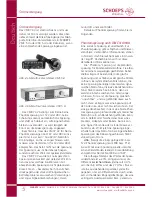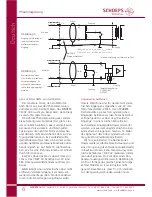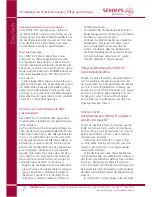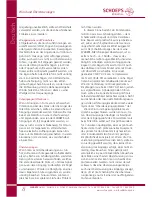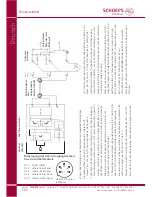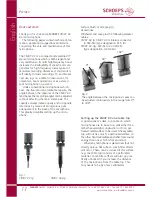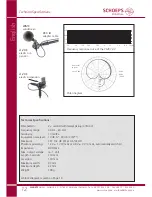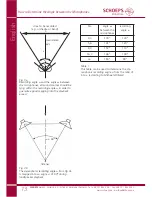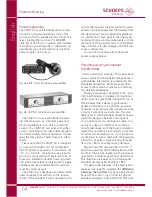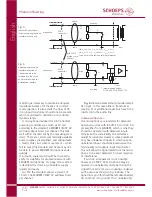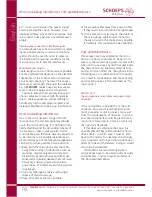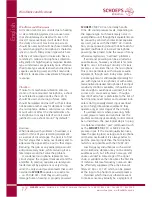
SCHOEPS
GmbH · Spitalstr. 20 · D-76227 Karlsruhe (Durlach) · Tel: +49 721 943 20-0 · Fax: +49 721 943 2050
www.schoeps.de · [email protected]
Block Diagram
19
English
Pin assignment of the XLR-5 output con-
nector or of the adapter cable, respectively:
Pin 1: screen (GND)
Pin 2: +phase left channel
Pin 3: –phase left channel
Pin 4: +phase right channel
Pin 5: –phase right channel
1
3
4
5
2
microphone amplifier
acoustic
transducer
impedance
converter
output
stage
DC/DC
converter
control
EMC filter
(RF filter)
screen
-phase
+phase
XLR-5
connector
3 / 5
1
2 / 4
microphone
cable (adapter
cable Binder /
XLR-5M)
Phantom
powering
U
s
= +48 V
R
s
= 6,8 k
Ω
R
s
= 6,8 k
Ω
preamplifier
,
recor
der or
mixer
*
*
**
∼ ∼
Bottom view
(as the pins are seen)
+Phase: An excursion of the diaphragm towards the back electrode (posi-
tive pressure phase) leads to a positive signal at this pin.
*matched pair; see page 5
** Here are three simple methods for verifying correct phantom powering.
These measurements should be made at an unused input. Reduce the
channel gain to protect loudspeakers, etc. If microphones are connected
to other inputs at the same time, no substantial difference should occur
in the results.
1. Measure the open-circuit voltage between ground (pin 1) and either
pin 2(4) or pin 3(5) of the XLR input. Given the permitted tolerances,
this voltage should be between 44 and 52 VDC for P48, and between
11 and 13 VDC for P12. Then, measure the short-circuit current
between ground (pin 1) and either pin 2(4) or pin 3(5) of the XLR input.
Given the permitted tolerances, this current should be between 5.9 and
8.5 mA DC for P48, and between 15 and 21 mA DC for P12.
Note: Well-designed phantom power supplies must tolerate at least a
temporary short circuit without damage; an unbalanced connection
(w
h
ic
h
i
s
o
cc
a
sionally necessary) would cause the same current to be
d
ra
w
n
.
To be safe, however, don't leave the short circuit in place
longer than necessary.
2) Measure the DC voltages on the modulation leads with a micro-
phone connected, e.g. by opening the connector shell of the cable. The
tw
o
voltages (from pin 2(4) and pin 3(5) to pin 1) must be identical.
W
it
h
a
n
C
M
X
Y
4
V
and a 48-Volt supply, they should be about 34 Volts
(minimum = 30 Volts). For P12 this is 9 Volts (minimum 8 Volts).
3) For P48, use a
SCHOEPS
PHS 48 tester. Plug it in to the XLR input sock-
et; if the LED glows and stays lit, all is well.

